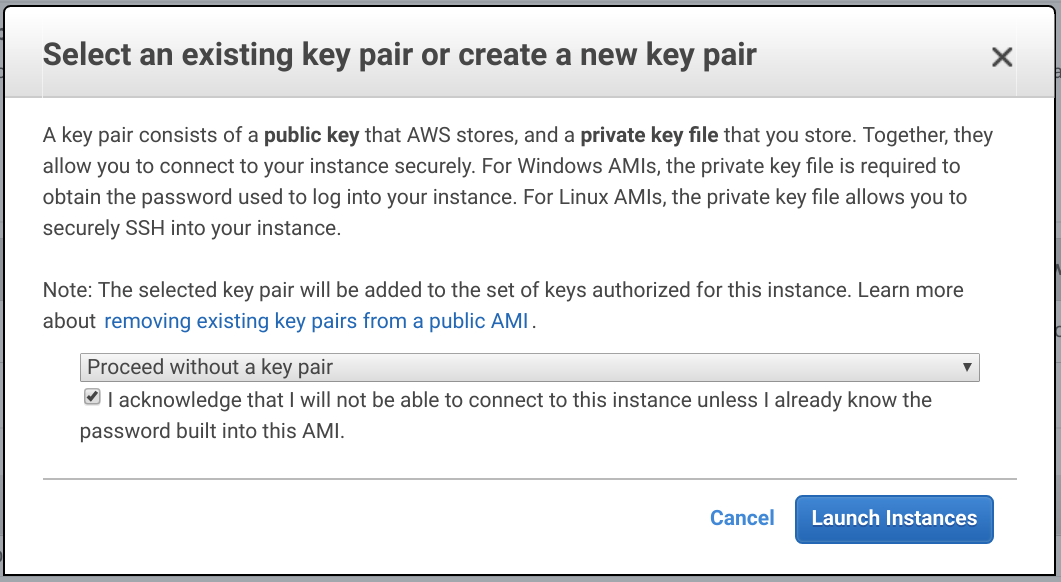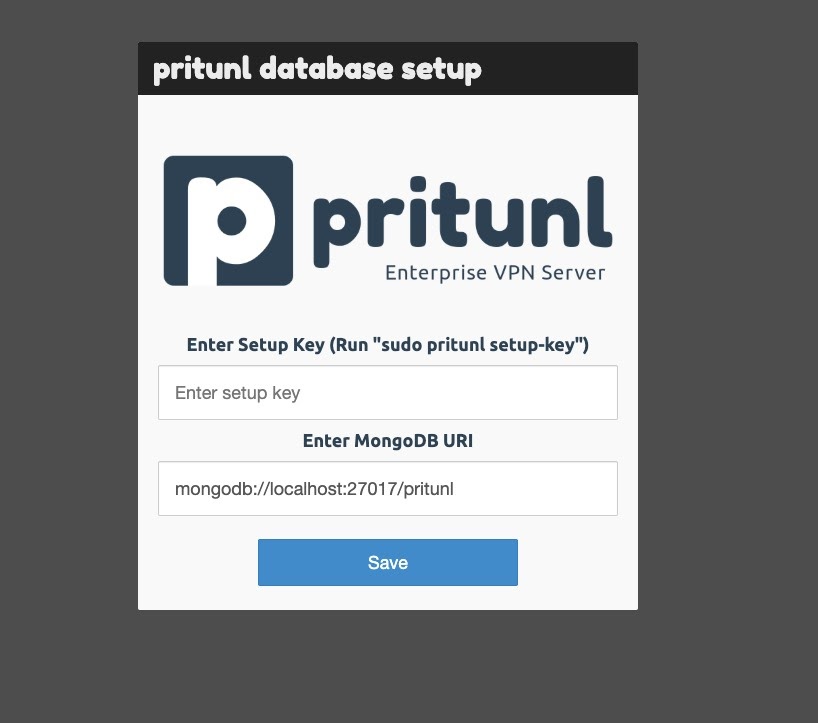

Once you hit "Add," the dialog will close. You may choose the protocol (UDP is better for speed, and shorter distances), local IP range, and other options available through the "Advanced" tab. Head to the "Servers" tab in the navigation bar and click "Add Server." You will be prompted with the following:įill in the fields with the appropriate information. Click "Add User", and you will be prompted with the following:Īs mentioned previously, Pritunl simply manages OpenVPN. You should have created an organization already, and creating a user is simple. If you wish to allow other users (whether it be a friend, or colleague), click the "Users" link on the navigation bar: Proceed to the next section on adding users, and creating your first VPN server. You will then be redirected to the login page:

Once you hit the "Save" button, you will be prompted to set credentials. Paste the key that you were given from pritunl setup-key. Now, visit your server: You should see the following: Make note of the key that comes from running the command above. Once yum finishes, we'll make it so Pritunl and MongoDB run on startup: systemctl start mongod pritunlĪfter installing Pritunl, run the following: pritunl setup-key Now, we'll run yum to install Pritunl: yum -y install pritunl mongodb-org We can now delete the temporary key: rm -f temp.tmp We've added all of the necessary packages and changed the necessary settings to install Pritunl.īefore we install, we need to add some keys (necessary for the repositories to function): gpg -keyserver hkp:// -recv-keys 7568D9BB55FF9E5287D586017AE645C0CF8E292A Only selected processes are protected.Ĭhange the SELINUX=enforcing line to SELINUX=disabled. # minimum - Modification of targeted policy. # targeted - Targeted processes are protected, # SELINUXTYPE= can take one of three two values: # disabled - No SELinux policy is loaded. # permissive - SELinux prints warnings instead of enforcing. # enforcing - SELinux security policy is enforced. # SELINUX= can take one of these three values: It should say the following once opened: # This file controls the state of SELinux on the system. We'll need to disable SELinux before continuing: nano /etc/selinux/config We now have all of the dependencies required. When the file loads in your text editor, paste the following: Ĭontinuing on, we need to install epel-release: yum -y install epel-release

PRITUNL INSTALL KEY SOFTWARE
Now that we've added the repository for MongoDB (database software for Pritunl), we need to add the Pritunl repository.

Once you do, simply press the "enter" key. Paste the following in: Įxit and save by pressing CTRL and O simultaneously. Once you've entered the file, it should be blank. The first thing we'll be doing is adding the MongoDB repository: nano /etc//mongodb-org-3.4.repo We'll be using nano for this tutorial, but you may use vim, if you prefer. It is similar to apt-get, so don't worry if this is your first time. Yum is essentially the package manager for CentOS and RHEL systems. In order to install Pritunl, we'll need to add the necessary repositories to yum. A minimum of 512 MB of RAM, or the lowest plan.Root access (determine whether you are root by executing the following command: whoami).
PRITUNL INSTALL KEY 64 BIT
A CentOS 7 system (both 32 and 64 bit systems are supported).In order to install Pritunl, you'll need: In addition to the features above, custom routes are supported, and key size can be selected for increased performance.
PRITUNL INSTALL KEY FULL
That said, it also receives regular updates, and allows for full customization. It allows for private networks, has native IPv6 support, and is relatively simple to use. Pritunl is an open source management interface for OpenVPN.


 0 kommentar(er)
0 kommentar(er)
